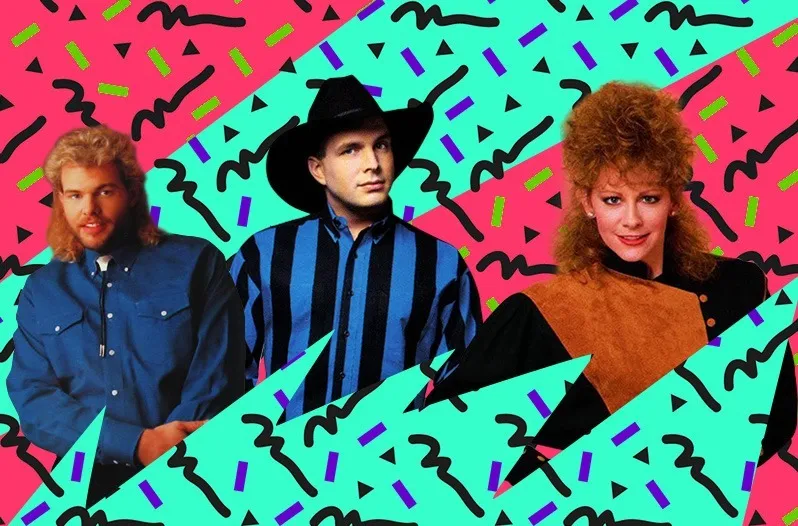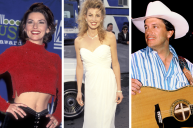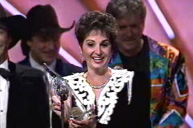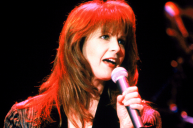It's difficult to judge an era of music while we're living in it. It takes several years — maybe even a couple of decades — before we can look back and really assess the quality of music and its broader impact on the culture at large. Country music journalists and historians have spent a lot of time studying the impact of Outlaw Country and the Bakersfield Sound, sub-genres that developed in response to mainstream country. But to try to sum up an entire decade of music is a near impossible task. And one of the most misunderstood and often unappreciated eras of the genre is 90s country.
The uninitiated may judge 90s country by its mega-hits, like Billy Ray Cyrus' once inescapable "Achy Breaky Heart," Brooks and Dunn's 1991 smash "Boot Scootin' Boogie" and basically anything that inspired a dance craze. Others may see it as the decade of Garth and Shania or the era where country radio turned its back on "true" country music.
It was a decade that began with artists pushing back against an increasingly pop sound. It ended with some of the most pop-oriented country songs that had ever been released to country radio. By 1999, George Strait and Alan Jackson were delivering country music's eulogy with "Murder on Music Row." Yet again, country music had found itself in the middle of a serious identity crisis.
But over the past few years, even the staunchest traditionalists have begun to look at 90s country in a new light.
Equality on the radio dial
One of the marks against modern country radio is the lack of women on the airwaves and the charts. To be fair, this has been an issue at various times throughout country's long history. Often put into a separate category of "girl singers," women artists have had to work twice as hard to achieve half the success of a man. But in the 90s, female artists enjoyed massive chart success. In 1996, women went to No. 1 on the Billboard Hot Country Songs chart 12 times. Ten years later, in 2016, Kelsea Ballerini was the only female country artist to hit No. 1.
In the 90s, a woman getting a No. 1 hit wasn't unusual. It was just what happened when you had a killer song. And if you turned on the radio, you'd be just as likely to hear Patty Loveless, Martina McBride, Mary Chapin Carpenter, Pam Tillis, Shania Twain and Deana Carter as you would hear Garth Brooks or George Strait.
If you want a clear example of how that's changed, country artist Kelleigh Bannen recently took to Twitter to discuss the imbalance between male and female artists in getting their songs played.
"Also was told 'the numbers still say women don't want to listen to other women' in a meeting on Wed. People have been saying this to me for 8 years," she wrote. "I practically have my doctorate in people saying this to me."
Maybe women just magically stopped enjoying the work of female artists in the last two decades, but it's unlikely. That's not to say that everything was perfect 20 years ago, but the playing field was much more even than it is today.
Country's introduction to a new audience
Country music exploded in the 90s, with diamond-selling albums by Shania Twain and hugely successful tours by Garth Brooks, the RIAA's top selling solo artist in U.S. history. It was the decade when country music was introduced to those who may not otherwise be exposed to it.
There are hundreds of posts online dedicated to 90s country nostalgia and how the decade shaped people's outlook on country music. Suddenly the genre was accessible even to those who didn't grow up hearing country music on the Grand Ole Opry or coming out of their parents' radio. Country's pop-influence became a point of contention for genre-purists. But artists like Shania, Wynonna, Garth and Reba were able to incorporate rock and pop influences while still nodding to the genre's rich history.
Collaboration between modern acts and legends
The neo-traditionalist movement of the late 80s and early 90s was in response to the Urban Cowboy craze. Artists like George Strait, Alan Jackson, Clint Black, Mark Chesnutt and Patty Loveless ushered in a sound that harkend back to country's roots.
The movement inspired collaboration between the generations. In 1997, Patty Loveless and George Jones took the Jim Lauderdale-penned "You Don't Seem To Miss Me" to No. 14.
https://www.youtube.com/watch?v=yLafPfvDl6M
Alan Jackson recorded Tom T. Hall's "Little Bitty" and the Roger Miller and George Jones-penned "Tall, Tall Trees." That introduced a whole new audience to the work of some of country's greatest songwriters.
Vince Gill helped keep classic country in the public eye by including Opry legend Little Jimmy Dickens in his video for "Don't Let Our Love Start Slippin' Away."
Today's artists continue to draw inspiration from 90s country. Charlie Worsham, who collaborated with Vince Gill and Marty Stuart on his debut album, recently performed a cover of Marty Stuart's "Tempted."




